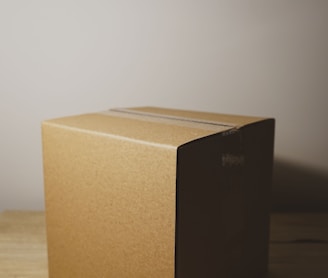Garments Packaging: The Ultimate Guide to Packing Your Clothes
In this article, we'll provide you with a comprehensive guide on garments packaging, including tips and tricks on how to pack your clothes properly.
CUSTOMIZATION OPTIONS
Saleem Shahzad
5/9/20234 min read


Are you wondering how to pack your garments efficiently and safely? Garments packaging is a crucial aspect of the clothing industry. Proper packaging ensures that clothes remain in their original condition during shipping, storage, and transportation. In this article, we'll provide you with a comprehensive guide on garment packaging, including tips and tricks on how to pack your clothes properly.
The Importance of Garments Packaging
Garments packaging plays a vital role in the clothing industry and personal customization. Proper packaging can protect clothes from damage, wear and tear, moisture, and dirt during transportation and storage. Moreover, it can keep your garments organized, making it easier for you to identify and access them when needed. Garments packaging can also enhance the presentation of your clothes, making them more attractive to potential buyers.
Types of Garments Packaging
There are various types of garments packaging available in the market, including:
1. Garment Bags
Garment bags are a popular choice for storing and transporting clothes. They come in various sizes and materials, such as plastic, fabric, and vinyl. Garment bags are perfect for suits, dresses, coats, and other delicate garments, as they provide protection against dust, moisture, and wrinkles.
2. Hangers
Hangers are the most commonly used garments packaging item. They come in various materials, such as plastic, metal, and wood. Hangers are perfect for storing and displaying clothes, especially shirts, blouses, and jackets.
3. Boxes
Boxes are an excellent option for shipping clothes. They come in various sizes and shapes, and they can be made from different materials, such as cardboard, plastic, and metal. Boxes can protect your clothes from damage during shipping, and they are easy to stack and store.
4. Wrapping Paper
Wrapping paper is an affordable and straightforward option for packing clothes. It can protect your garments from dust, moisture, and wrinkles during storage. Wrapping paper is perfect for clothes that are not prone to damage or wear and tear.
Tips for Proper Garments Packaging
1. Sort Your Clothes
Before packing your garments, it's essential to sort them according to their type, material, and purpose. This will help you choose the appropriate packaging material and ensure that your clothes remain in good condition.
2. Use High-Quality Packaging Materials
Invest in high-quality packaging materials, such as garment bags, hangers, boxes, and wrapping paper. Cheap packaging materials can damage your clothes, leaving them wrinkled, torn, or stained.
3. Use Acid-Free Tissue Paper
When packing delicate garments, such as wedding dresses, use acid-free tissue paper to prevent discoloration and deterioration. Acid-free tissue paper is also ideal for packing vintage clothes, as it helps preserve their quality and color.
4. Use a Vacuum Sealer
If you're short on storage space, consider using a vacuum sealer. Vacuum sealing your clothes can reduce their size and protect them from dust, moisture, and insects.
5. Avoid Overpacking
Avoid overpacking your garments, as this can damage them and leave them wrinkled. Make sure to leave enough space in your packaging to prevent crushing or flattening.
6. Label Your Packaging
Label your packaging according to the type of garment, its size, and its purpose. This will help you identify your clothes easily and save time when unpacking.
FAQs
Q1. How do I pack a suit for travel?
To pack a suit for travel, first, turn the suit jacket inside out and fold it in half lengthwise. Then, fold the pants in half lengthwise and place them on top of the jacket. Next, place the folded suit inside a garment bag or a plastic bag to protect it from wrinkles and moisture. Make sure to hang the garment bag or place it flat in your suitcase to prevent crushing.
Q2. How do I pack shoes in my luggage?
To pack shoes in your luggage, first, stuff them with socks or underwear to maintain their shape and prevent them from rubbing against each other. Then, place them in a plastic bag or shoe bag to prevent them from dirtying your clothes. Finally, place the shoes at the bottom of your suitcase, with the soles facing outward, and pack your clothes on top.
Q3. Can I pack my clothes in a vacuum-sealed bag for long-term storage?
Yes, you can pack your clothes in a vacuum-sealed bag for long-term storage. Vacuum sealing your clothes can protect them from dust, moisture, and insects. However, make sure to follow the manufacturer's instructions and avoid packing delicate garments, such as wool or silk, in vacuum-sealed bags.
Q4. How do I pack delicate garments, such as silk or lace?
To pack delicate garments, such as silk or lace, use acid-free tissue paper to prevent discoloration and deterioration. Wrap the garment in tissue paper and place it in a garment bag or a plastic bag to protect it from dust, moisture, and wrinkles. Avoid folding delicate garments, as this can damage them. Instead, hang them on a padded hanger to maintain their shape.
Q5. Can I pack my clothes in a cardboard box for shipping?
Yes, you can pack your clothes in a cardboard box for shipping. However, make sure to choose a sturdy box and wrap your clothes in bubble wrap or packing paper to protect them from damage. Label the box clearly and avoid overpacking to prevent crushing or flattening.
Q6. How do I store my winter clothes during the summer?
To store your winter clothes during the summer, first, sort them according to their type and material. Then, clean them thoroughly and pack them in airtight containers or vacuum-sealed bags to protect them from moisture and insects. Label the containers clearly and store them in a cool, dry place, away from direct sunlight.
